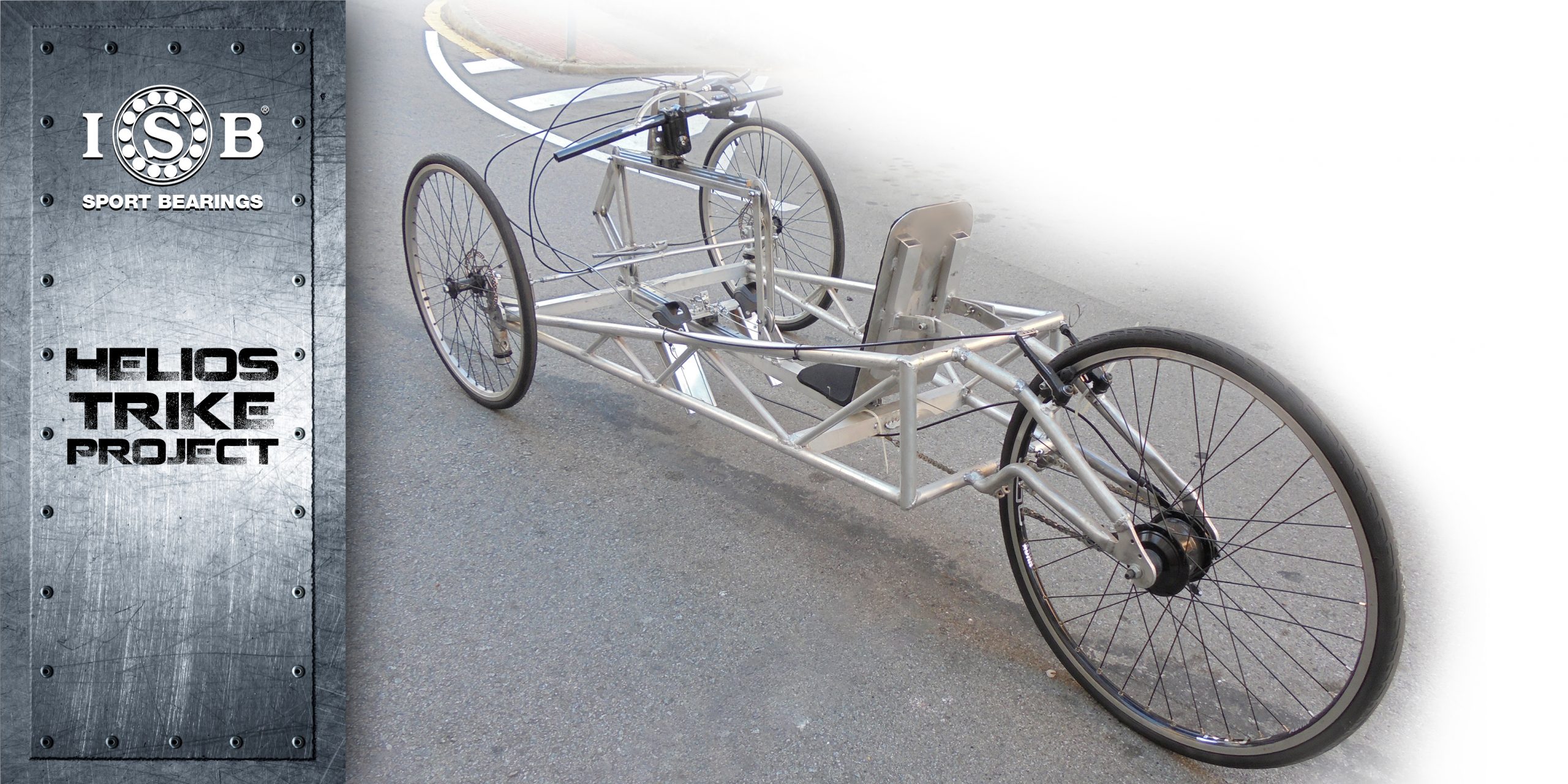
26 Nov HELYOS TRIKE BY ISB SPORT
Background
This project was born with the intention of improving the way of moving with a vehicle similar to a bicycle, but whose propulsion system has the characteristics of a rowing. This has a drawback as it is that the propulsion is not continued and a great advantage is that we obtain extraordinary power deliveries, since the strength of the legs (both together) are added to the strength of the dorsal arms. Thus, we are dealing with a vehicle that works in a similar way to a canoe or a scooter.
The ISB project
In the traditional bicycles that we all know, the force that the cyclist can develop is practically equal to that of the user’s own weight. The differences are only due to the resistance of the user and, obviously, the weight of the vehicle used.
The Human Powered Vehicles Association (IHPVA) organizes the Pure Speed World Championships annually in September, which are held in Battle Mountain (Nevada) in which all the participating models are of the “Recumbent” type, optimized to the highest level of technical study in order to improve their performance as much as possible. For the most part, these are university projects. The IHPVA itself is also the one who controls the new world records.
However, the International Cycling Federation prohibited the participation of these Recumbert models in competitions because they offered a power delivery up to 12% more efficient than conventional bicycles, a fact that is given only by the improvement of the cyclist’s position. But the only force used is still that of the legs. Thus, we are dealing with a vehicle that is capable of obtaining more than three times the power of a conventional bicycle given the position of the cyclist and optimization of its performance.
Characteristics
The measurements obtained reveal that, while with a conventional bicycle a 70 kg cyclist exerts a pressure of 70 kg on the pedals, with a Recumbent he would achieve approximately a pressure of 79 kg and with this system a pressure of 210 kg is achieved under normal conditions. It would be necessary to verify the data of an Olympic athlete.
The length of the “Stroke” is 60cm so, each stroke moves 60 teeth of the pinion of the drive wheel.
Average time of each stroke: 1 second
The wheel mounts a Shimano 11-speed derailleur inside the axle.
Changed conventional 18-tooth pinion gear to 12-tooth to improve resolution
What should we solve?
Although the speeds have not yet been measured, the tests carried out so far allow us to reaffirm our idea that there are many possibilities to reach high speeds.
To date, 8 bicycles have been built in a trial-and-error process.
It would be necessary for the derailleur to have more speed capacity and for this we believe that only one crown of the pinion should be turned with the minimum number of teeth possible (6 or less).
